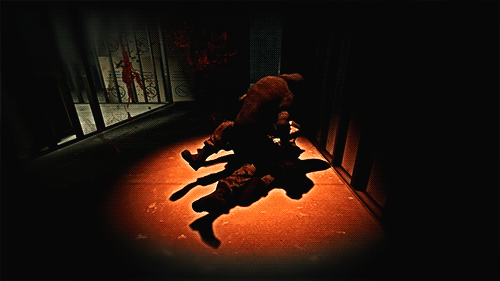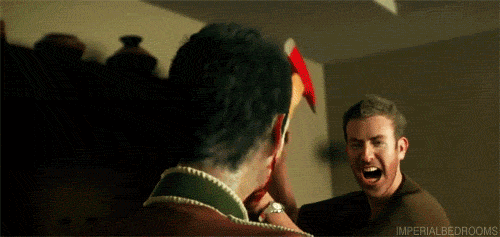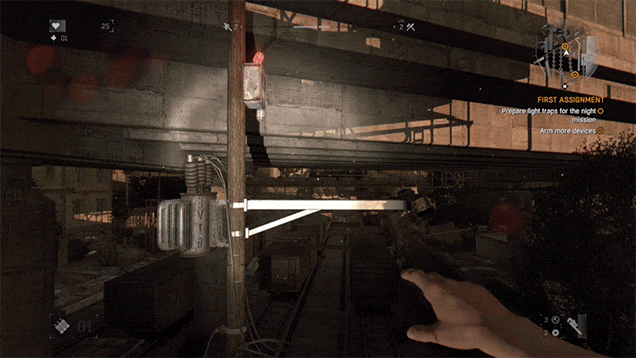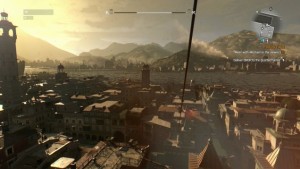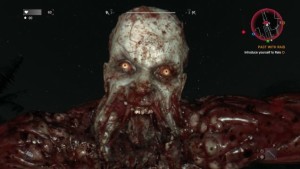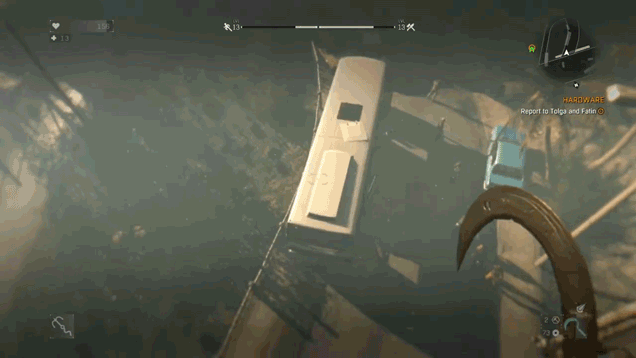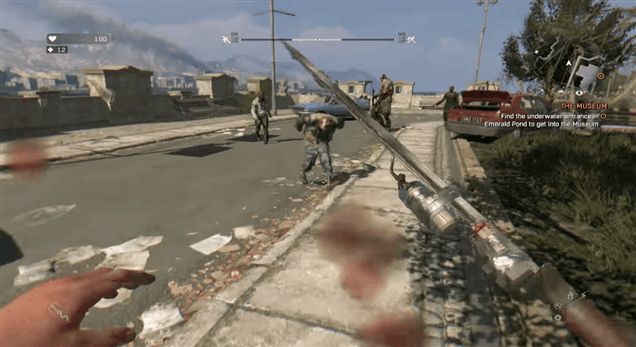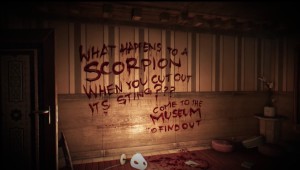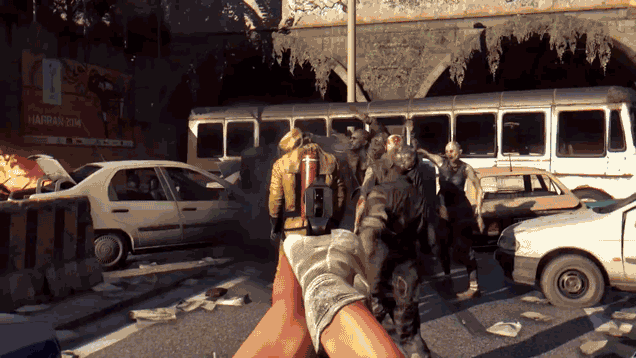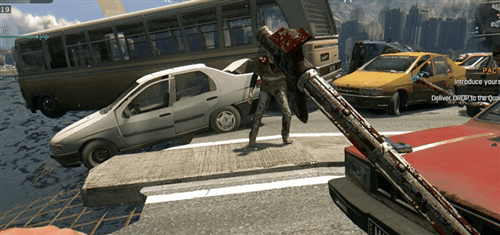By the fall season of 2008, I had been a Microsoft “Xbox 360” owner for barely six months. And during that time I had the opportunity to play some open world games (“Grand Theft Auto IV” and “Saint’s Row” to be precise), dove into an even more beautifully rendered boxing ring with “Fight Night Round 3”, and had the chance to race around the world in “Forza”. But all of the games mentioned had a certain level of expectation to them that would make the experience either better or worse depending on the game’s quality.
But then there came a game where I, like many others who weren’t involved in the process of making, marketing and reviewing it, had no expectations for whatsoever, “Left 4 Dead”. The game threw a group of characters (controlled by up to four humans) in a world that had been turned upside thanks to a zombie outbreak. The action-packed co-op experience became a smash hit and turned into a genuine system seller for Microsoft.
“Left 4 Dead” spawned a sequel and a new wave of zombie oriented multiplayer action that made gamers either grow more excited or more tired with each game coming down the pike. No matter what side you were own in this argument about the genre’s quality, everyone and their mother questioned how much further could creators go in creating the “end of the world” experience. Techland – the developers mostly known for “The Call of Juarez” series – threw their names in the hat when it came to zombie-based multiplayer experiences with “Dead Island”.
The game was mostly a success thanks to the “jump in/jump out” multiplayer structure, a large open world and weapons crafting. A sequel was released almost two years later, but didn’t garner the same praise as its predecessor mostly thanks to a lack of innovation compared to the original and glitches that would make Bethesda Studios blush. With Deep Silver purchasing the rights to the franchise, Techland ventured out to create something different while retaining their idea of how the genre could evolve. Thanks to the power of eighth generation game consoles and a focus on parkour, “Dying Light” entered the world with more buzz than either “Dead Island” game. I enjoyed the first “Dead Island”, loathed the pseudo-sequel “Dead Island: Riptide”, and was excited to see if “Dying Light” could restore my faith in the people who believed they could take zombie games to the next level.
Did I Complete “Dying Light”
“Dying Light” began as a “Dead Island” sequel that could help shift the zombie genre and the franchise in general. “Dying Light”, similar to the “Dead Island” games, is set in a fictional island city, Harran. Shortly before the game world’s version of the Olympics occurred in Harran, an outbreak turned a majority of the island’s civilians and tourists into killer zombies. Players take the helm as Kyle Crane – an agent for the Global Relief Effort that believes he can help find a cure through his athletic skills, gift of gab and proficiency in hand-to-hand combat.
For players of the original “Dead Island” games, “Dying Light” feels incredibly familiar and a true natural progression to what the aforementioned franchise needed following “Riptide”. Like its spiritual predecessors, “Dying Light” starts off slow, but eventually ramps up craziness with bigger and badder enemies, more dangerous environments and a grappling hook (a grappling hook!). Due to the core gameplay, “Dying Light” rightfully encourages a player to take part in the various activities scattered throughout the world while playing through the story. Thankfully a lot of these events, side quests and activities bring forth trophies and achievements – giving the player a reason to try almost everything since a majority of the challenges don’t reach the depths of fostering frustration. Not only did I finish the story, I attained every possible trophy a person could earn without a human teammate. Who knows – maybe one day I’ll find some people eager to help me get those trophies (there’s only four multiplayer trophies in the base game).
Did “Dying Light” Live Up to the Hype?
As noted above, one can’t help but immediately mention just how similar, for better and for worse, this game is compared to the “Dead Island” games. But Techland would’ve been pretty stupid to abandon an engine that was mostly functional and only needed a few tweaks here and there to make it as perfect as possible. Hit detection is a lot better compared to “Dead Island”; glitches (though still apparent) are few and far between and never appear to be game-breaking; and the ability to craft the nastiest weapons imaginable for the zombie apocalypse is still exhilarating. But what makes “Dying Light” different from the games that inadvertently helped craft this one are two specific additions to the core gameplay mechanics: parkour, and a day & night cycle.
Rather than be stuck with characters who are only able to run and jump maybe a good two feet into the air like the “Dead Island” leads, “Dying Light’s” protagonist is a skilled runner and jumper – able to sail across rooftops and clutch the sides of cliffs with ease. Oh, and the grappling hook! Seriously, it’s one of the most fun aspects of the game, hands down. Being able to zip across areas in a flash takes away a lot of the busy work that, at times, comes from trying to move across such a sizeable world. The land of Harran is not “Grand Theft Auto V” big. Heck, it’s not “Infamous: Second Son” big. But Harran is large enough that an item like the grappling hook is a welcomed addition and gives the player a reason to explore just to see what works and what doesn’t.
Tying into the parkour and grappling hook is the game’s “day & night” cycle that is exactly what it sounds like. After a few missions, the game introduces this staple (the cycle) in the open world genre – though it is something the “Dead Island” games lacked – where the infected are given a boost of energy and powers thanks to the setting sun. Players who aren’t in or near a safe house at night are forced to come face to face with jacked up enemies such as the Volatiles. Thanks to the mix of (mostly) precise parkour, a heightened attention from juggernaut-like enemies and a fear of death, playing during the in-game nighttime is exponentially fun and rewarding (with the latter thanks to double skill points being issued out at night). But the cycle definitely isn’t set at a 1:1 ratio, so the player is given a chance to explore the land with a little more freedom under the sun rather than running for his/her life in the dark.
Some aspects taken from the “Dead Island” games and utilized in “Dying Light” have been improved. Players still have to find blueprints and items to craft special weapons in the game, but now they don’t have to wander around looking for workbenches to repair their favorite tools of destruction. If a person has picked up specific items mostly found anywhere in Harran, they can do a quick repair job in real-time by simply hitting one button. The action has proven to be a literal lifesaver for me during situations where one weapon works specifically well against mounting adversaries.
The skill tree (the reason for those double points during nightly adventures) returns, but in a more simplified manner; featuring effective options for each proverbial tree branch (“Power”, “Agility” and “Survivor”). Almost every skill strengthens Crane and adds another aspect to the gameplay.
But not everything works exceptionally well as one would expect from a game of this magnitude. The parkour platforming can be a tad sensitive at times with Crane only attaching himself to the nearest of objects even if the camera isn’t pointed in that specific direction. Combat, while a lot better compared to the “Dead Island” games, is still rough around the edges. Human enemies have a penchant for dodging melee strikes with the greatest of ease while having infinite stamina – something Crane cannot do and does not have respectively. During situations where guns are involved, the action takes a severe dip as the gunplay can feel imprecise and even sluggish when trying to whip the character around to see who is hitting Crane – which is a shame because there are quite a few firefights late in the game.
There’s also a problem with the game’s difficulty level in the early hours. With few weapons at Crane’s disposal as well as abilities and health, the probability of dying frequently is higher than it was in “Dead Island” (a game that also had this “too hard, too early” problem). On the other end of the spectrum, two-thirds into the game, Crane almost becomes god-like if the player has been continuously upgrading weapons and skills. The initial fear that causes the player to run and hide rather than fight in the game’s early hours is replaced with a belief that no matter what he/she encounters, Crane won’t die. I actually had more trouble staying alive from traversing buildings during the latter half of the game and having Crane plunge to his death due to a misstep more than any infected killing him.
Then there’s the narrative. The opening minutes are prototypical, but seem to have the makings of being something a lot better than “Dead Island” or “Dead Island: Riptide’s” plot. Sadly, the streak of sub-par zombie game stories continues with “Dying Light”. All your favorite zombie genre clichés are here – “super heroine turns into a damsel in distress”; “government is not working toward the best interests of its people”; “main antagonist is a charismatic sociopath”; “the main character is less than a man in the opinions of others until he proves himself by going out of his way to help random people who only provide him with useless information and/or weapons”. Techland reps stated that they wanted to provide a mature story in the “Dead Island” franchise that would be different from anything else on the market. Well, they waited a little too long because “Far Cry 3” presented a lot of the story elements, cliché characters and talking points two years prior. “Dying Light’s” narrative is essentially “Far Cry 3” with zombies instead of man-eating sharks.
And that’s not even mentioning the majority of the quests, both story and side, are long-winded fetch missions where Crane has to “go here”, “get this”, “return and reward”. And don’t worry about keeping track of funds. There’s really no reason to buy anything in this game as some of the best items are either made or found.
Animation isn’t the game’s strong suit, either. While Harran looks absolutely gorgeous (especially when Crane moves from a shanty town to this “Assassin’s Creed”-esque area of Harran) and believable featuring random events and set pieces surrounded by realistic 3D models as far as the eye can see, the character models leave a lot to be desired. A majority of the models look like someone scanned one of those “Learn How to Draw People” books and shaded in the results on a computer. Add that to the fact at times the voice-mouth synchronization will be totally off with lips flapping and no sound, or vice versa.
One of the more disappointing aspects from a creative standpoint is the monster/infected design. Those who have played “Dead Island” will recognize Techland didn’t go out of their way to make a group of unique creatures compared to the ones found in their previous zombie games. The most obvious examples are the acid-spitting “Toad” (which is just like the “Floater” from “Island”) and the “Bomber” that explodes if you get too close – becoming a living landmine and a guaranteed death for Crane – just like “Island’s” “Suicider”. The few unique enemies simply replace some of “Dead Island’s” most infamous adversaries without being impressive like the slow-moving, super sledgehammer-carrying “Goon”/“Miner” whose sledgehammer swing range is terribly unpredictable and easily downed by thrown items like molotovs. One of the few baddies to standout is the HAZMAT suit-wearing infected. Thanks to an oxygen tank strapped to their backs, these enemies can become propelled grenades if a person ruptures the tanks and sends them flying in the direction of a dangerous horde.
Though multiplayer is functional, one of the most innovative modes featured in the game can be a bit of a mess, “Be the Zombie”. In this mode, players can invade a player’s open game and start a session of killing (by the invading “Night Hunter”) and nest destroying (by the player being invaded). But trying to invade a friend’s game can prove frustrating as players either can’t invade or will get kicked out in mid-game. Even after some patching, the mode is still unstable.
“Dying Light” is truly a mixed bag of potential both realized and unfulfilled.
Should You Play “Dying Light”
Though “Dying Light” is obviously a heavily flawed game, it is one of the most enjoyable experiences I’ve had since owning a “Playstation 4” simply because it’s the “Dead Island” game I’ve always wanted; just under a different name. The parkour is incredibly exhilarating, if a little finicky at times. The combat is brutal, if a little stiff and not as fluid as one would expect from an apparent parkour master like Crane. “Be the Zombie” mode is fun when you can get it to work. According to those who have spent a majority of their time playing co-op in this game, it works so much better as a multiplayer experience than going alone. While Techland didn’t innovate when it comes to story and quests, they did deliver a quality game that’s worth your time even if it does feature one of the worst final boss battles of this generation thus far. I’m excited to see how much they improve with “Dying Light 2” because they have created a solid foundation of gameplay that just doesn’t get old.


